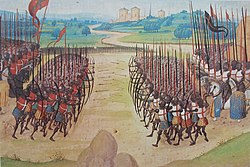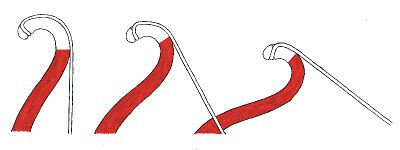Handbook to the ethnographical collections (1910) (14782953772)
Identifier: handbooktoethnog00brit (find matches)
Title: Handbook to the ethnographical collections
Year: 1910 (1910s)
Authors: British Museum. Dept. of British and Mediaeval Antiquities and Ethnography Joyce, Thomas Athol, 1878-1942 Dalton, O. M. (Ormonde Maddock), 1866-1945
Subjects:
Publisher: (London) : Printed by order of the Trustees
Contributing Library: University of California Libraries
Digitizing Sponsor: MSN
View Book Page: Book Viewer
About This Book: Catalog Entry
View All Images: All Images From Book
Click here to view book online to see this illustration in context in a browseable online version of this book.
Text Appearing Before Image:
o visitedthem in early times insearch of hvche-de-mer andedible birds nests. Boththe Arabians and MarcoPolo speak of the mon-strous appearance andferocity of the people.But since the British occu-pation (1789-96. and 1857onwards) it has beenshown that when kindlytreated they are of a livelyand friendly disposition. When first discoveredthe Andamanese had fire,which they kept alive butwere unable to produce.Their cooking was doneby broiling or baking theirfood in hot stones ; andthey were able to make arude kind of pottery. Be-fore the introduction ofiron their implementswere made of shell and stone. They support themselves almostentirely by hunting and fishing, spearing turtle and shooting wildpig, being very expert with the bow. Their houses are not builton piles, and are often mere lean-to huts thatched Avith palm-leaves. There are various tribes on the islands, subdivided intocommunities under local chiefs, Avhose authority, however, is verylimited. Intertribal feuds were comjiion.
Text Appearing After Image:
Fig. 64. -Andaman Islander strinsboAv. INDIA AND CEYLON 79 No clothing is worn, with the exception ofornamental belts, garters, bracelets and neck-laces of leaf, bone, wood or shell; women weara small leaf apron. The head is commonlykept clean-shaved from early youth, a flake ofquartz or a splinter of glass being used as arazor. Cicatrization is universal, and is also executedwith a flake or piece of glass ; no pigment isrubbed into the wounds. The bod)^ is in ad-dition ornamented with stripes of Avhite and red-coloured clay, each design having its significance,one meaning that the wearer is in mourning,another that he is about to take part in afestivity, &c. The principal weapon of all tribes is the long-bow (fig. (54): arrows, none of which have leathers,are tipped with iron hammered out cold on astone (fig. 65). Another important Aveapon is theharpoon used for turtle or large fish. When theturtle is struck, the head of the harpoon isdetached and the shaft floats. The implements
Note About Images
Relevantní obrázky
Relevantní články
LukLuk je střelná zbraň. Skládá se z pružného lučiště a nepružné tětivy. Střelba z luku se nazývá lukostřelba. Střílí se šípy, původně dřevěnými nebo bambusovými, v současné době běžnějšími karbonovými nebo duralovými, které mají na jednom konci opeření, zlepšující výrazně jejich letové vlastnosti. Na druhém konci je ostrý, dnes nejčastěji kovový hrot. V pravěku se ke zpevnění konce šípu používalo i opálení v ohni nebo kamenné hroty. Vynález luku spadá nejspíše do paleolitu, nicméně jednoznačné archeologické nálezy jsou až z mezolitu. Luk byl vynalezen a používán nezávisle na sobě mnoha světovými kulturami. .. pokračovat ve čtení





























